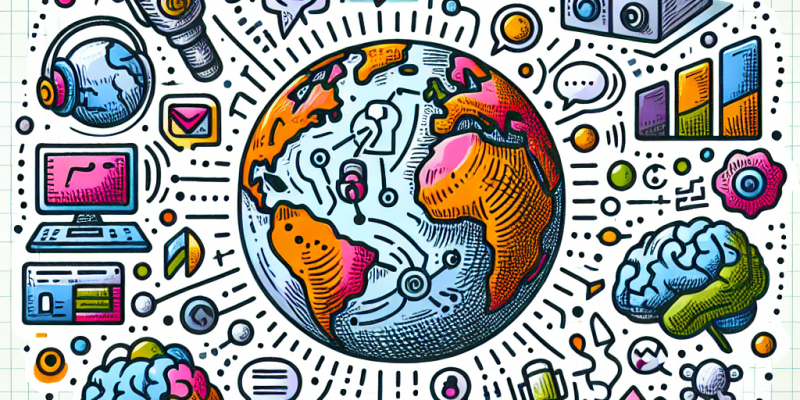Beyond Speech Recognition: The Many Applications of NLP in Today’s World

Natural Language Processing (NLP) represents a fascinating intersection of computer science, artificial intelligence, and linguistics. Traditionally associated with speech recognition technologies, NLP extends far beyond simply converting spoken words into text. As organizations leverage the power of NLP, its applications are rapidly transforming industries, enhancing user experiences, and reshaping communication. In this article, we will explore the diverse and impactful applications of NLP across various domains.
1. Customer Service Automation
One of the most well-known applications of NLP is in customer service chatbots and virtual assistants. These AI-powered tools use NLP to understand customer inquiries posed in natural language. By providing quick, accurate responses, they streamline customer support processes, handle routine questions, and free up human agents to tackle more complex issues. Companies like Zendesk and Drift have integrated NLP solutions that not only improve response times but also enhance overall customer satisfaction.
2. Sentiment Analysis
In the age of social media, understanding public sentiment is crucial for brands and organizations. NLP enables sentiment analysis, which assesses the emotional tone behind text data—be it social media posts, product reviews, or customer feedback. By leveraging NLP algorithms, businesses can gauge public perception of their products or services, enabling them to make informed decisions about marketing strategies, product development, and customer engagement.
3. Language Translation
NLP has transformed the landscape of communication across linguistic boundaries. Technologies such as Google Translate utilize NLP to enable real-time translation between languages. By analyzing contextual nuances and idiomatic expressions, NLP facilitates more accurate translations, making global communication more accessible. Whether in international business dealings or travel, NLP-driven translation tools have revolutionized how individuals interact across cultures.
4. Content Creation and Summarization
The ability of NLP to analyze vast amounts of text enables automated content creation and summarization. Media outlets and marketers leverage NLP tools to generate engaging articles, reports, and summaries efficiently. For instance, services like Jasper and OpenAI’s GPT-3 can produce coherent narratives based on input data, while summarization algorithms distill lengthy articles into digestible insights. This capability is invaluable for businesses looking to streamline information dissemination and enhance content engagement.
5. Information Retrieval and Question Answering
In an era overflowing with information, NLP techniques significantly improve information retrieval and search functionalities. Information retrieval systems, such as enterprise search engines, use NLP algorithms to understand user queries better and deliver more relevant results. Additionally, question-answering systems powered by NLP—like IBM Watson—can respond to complex queries by sourcing information from a variety of datasets, making knowledge access more efficient.
6. Healthcare Applications
In the healthcare sector, NLP plays a critical role in managing clinical documentation and patient records. By processing medical literature and patient notes, NLP helps healthcare providers extract vital information that aids in diagnosis and treatment planning. For instance, NLP can identify keywords and patterns in patient data, helping clinicians better understand patient history and improve care outcomes. Furthermore, NLP applications such as predictive analytics can assist in identifying potential health risks based on trends within a population.
7. Personal Assistants
Smart personal assistants, like Amazon’s Alexa, Apple’s Siri, and Google Assistant, rely heavily on NLP to understand and respond to user commands. These assistants can perform a range of tasks, from providing weather updates to controlling smart home devices, all through natural language interactions. The continuous improvement of NLP algorithms enhances the accuracy of these assistants, leading to greater user satisfaction and engagement.
8. Educational Tools
NLP is making significant contributions to educational technology. Tools powered by NLP facilitate personalized learning experiences by analyzing student input and assessing language comprehension levels. NLP can assist in grading written assignments and providing constructive feedback, allowing educators to focus more on teaching and less on administrative tasks. Additionally, language learning apps like Duolingo leverage NLP to help users practice conversational skills in real-time.
Conclusion
The applications of Natural Language Processing extend far beyond the realm of speech recognition—encompassing areas such as customer service, sentiment analysis, translation, content creation, healthcare, and more. As NLP technologies continue to mature, businesses and individuals alike will benefit from increased efficiency, improved communication, and enhanced decision-making capabilities. In a world driven by data and communication, NLP’s role is becoming more integral and indispensable, paving the way for a future where human-AI interaction is seamless and intuitive.














